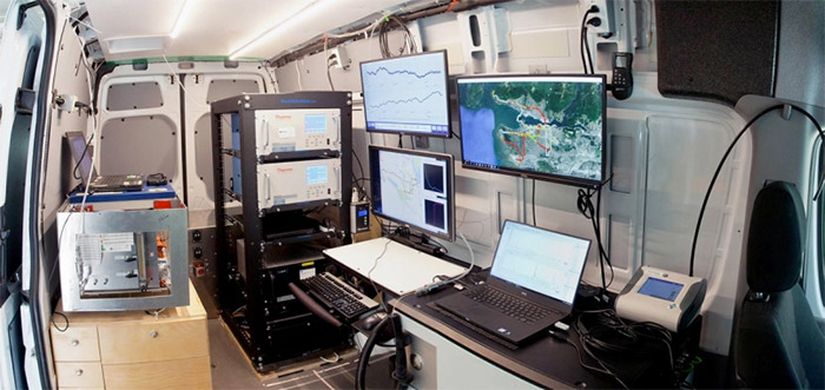I know a bit about AERL and mass spec already since Erik was one of my chemistry professors during my undergrad at VIU. I never worked with AERL, but a few of my friends worked with them and I saw the spectrovan a few times. I wish the van had a bit of Scooby Doo theming (as it is sort of a mystery machine), but, sadly, I wasn’t involved in the design process.
Mass spectrometry is useful measuring the identities and amounts of pollutants in the air and water. Mass spectrometry is both sensitive (detects in small amounts) and selective (detects specific compounds). While mass spectrometers used to be huge instruments, advances in technology have led to mass spectrometers shrinking significantly to the point that they can fit in a vehicle. Mass spec can’t be done as it’s done in the lab, with significant sample preparation and isolation, so direct sampling, where the sample is exposed to a semipermeable membrane and measured more directly, is done.
A mobile mass spec system has allowed the scientists at AERL to measure toxins given off by algae in real time during algal blooms, measure hydrocarbons in water and soil in the field, and measure fatty acids in salmon meat (useful for salmon farmers). Mobile instruments are ideal in situations with sensitive or ephemeral compounds because testing sample in situ, reduces chances of sample contamination and degradation, since sending sample to a lab introduces many opportunities for this. Mobile mass spec is also useful for situations like assessing city pollution since it allows for an increase in sampling density and coverage. It’s also useful for assessing pollution, such as oil spills, because the real time feedback can inform public health decisions, such as when tap water will be safe to drink.
I was interested in learning about the development of the mobile mass spec set up. Testing known samples and testing a lab created gasoline spill to assess how the system characterises samples makes sense. Although I’d seen the spectrovan before I didn’t know that it had two complementary mass spec. apparatuses.
My masters thesis is on how mountain chickadees are impacted by urbanisation and pollution is a big part of urbanization. It would be interesting to compare nest success in areas with high pollution to areas with lower pollution. If I had been able to attend the presentation in person I would have asked Erik about how air pollution in Prince George compares to that on Vancouver Island.

Inside the mobile mass spectrometry lab.

Recent Comments